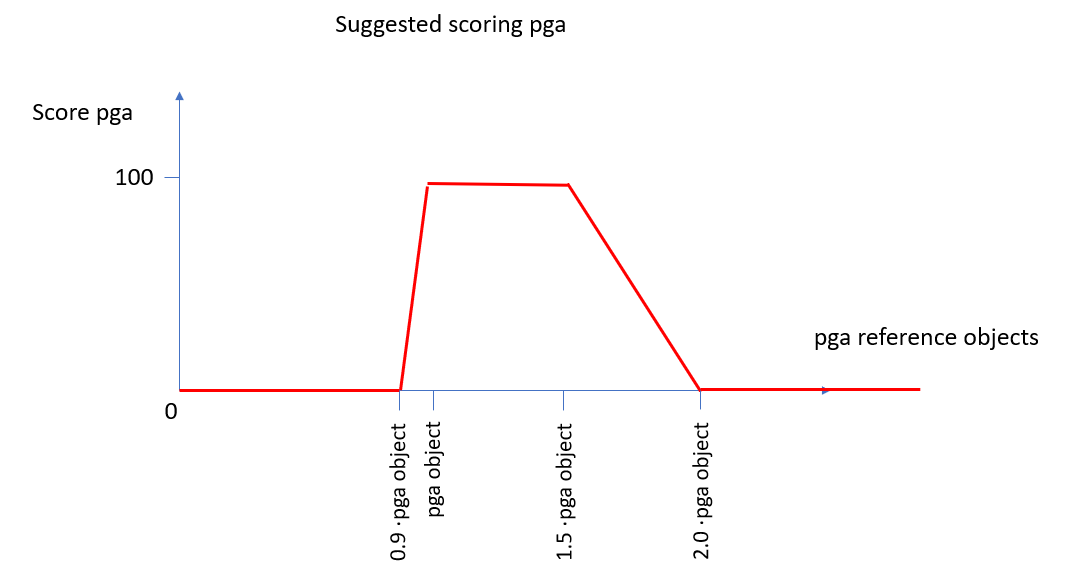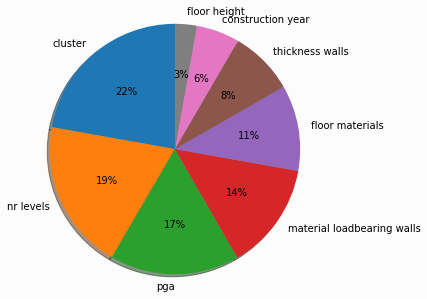Scoring preselection tool
This section explains the approach that is used to determine the score for this particular aspect. The scoring mechanism has been discussed and approved by lead engineers, but will be subject of improvement. Continued experience is reflected in the scoring.
This section elaborates on the methodology employed to calculate the score for this particular aspect. While the scoring mechanism has already been reviewed and approved by lead engineers, it remains open to refinement as we gain further experience. As we continue to learn and grow, we will incorporate our ongoing experience into the scoring system.
Cluster
When the cluster of the reference matches the cluster of the object, the score is 100%, else no score. The cluster can be agro, detached, multi-storey building etc.
Construction year
This score checks if the reference is older or of the same age as the object. In that case a score of 100% is allocated else 0%.
Material loadbearing walls
If the material of the object matches any material selected in the reference object, the score is 100%. In other cases the score is based on a ranking and the distance within this list to the matching material. If it is one next to the one in the list the score is 70%, two next to this is 40% and in any other case 0%.
The ranking-list is: ‘concrete’, ‘clay masonry’, ‘calcium silicate > 1985’, ‘calcium silicate > 1960’, ‘aerated concrete’, ‘timber’, ‘modification wall’. For example if the object has concrete loadbearing walls and the reference object clay masonry the score will be 70%. If the object has aerated concrete and the reference concrete loadbearing walls the score is 0%. If the object has loadbearing walls in clay masonry and the reference calcium silicate > 1960 the score is 40%. Note that for this ranking timber and HSB are treated the same.
Floor height
If the most common floor height of the reference object is within +/- 0.5m of the common floor height of the object the score is 100%, within +/- 1.0m the score us 70%, else 0%.
Thickness loadbearing walls
When the thickness is matching the 100%. When the thickness matches +/- 20mm the score is 90%. In other cases the score is 0%.
Number of levels
If the number of levels in reference matches the object, the score is 100%. In other cases the score is 0%.
Floor material
If the selected dominant floor material matches the reference object, the score is 100%. In other cases the score is 0%.
Design PGA
The PGA score is calculated as shown in the following figure:

If the PGA of the reference object (PGA_ref) is less than 0.9 times the PGA of the object being assessed (PGA_obj), a score of 0% is considered. If PGA_ref is between 0.9 and 1 times PGA_obj, the score is calculated as a linear interpolation between 0% and 100% depending on the difference of the PGAs. If PGA_ref is between 1 and 1.5 times PGA_obj, a score of 100% is considered. If PGA_ref is between 1.5 times and 2 times PGA_obj, the score is calculated as a linear interpolation between 100% and 0% depending on the difference of the PGAs. If PGA_ref is greater than PGA_obj, a score of 0% is considered.
Overall score
The overall score combines the aspects scores above to a single value, which is used for the sorting. The items are weighed and ordered as following:

22.2% Score cluster (to be sure that is the same ‘type’ of building)
19.4% Score nr levels (to be sure that is the same ‘type’ of building)
16.7% Score PGA (it is basically the first thing that we look after the type of building)
13.9% Score material loadbearing walls
11.1% Score floor material (the material of the floor is also pretty relevant, we try to compare buildings with first floor in concrete material to others which also have concrete material and the same for timber material on the first floor)
8.3% Score thickness loadbearing walls
5.6% Score construction year
2.8% Score most floor height
Making up to a total score of max 100.0%.